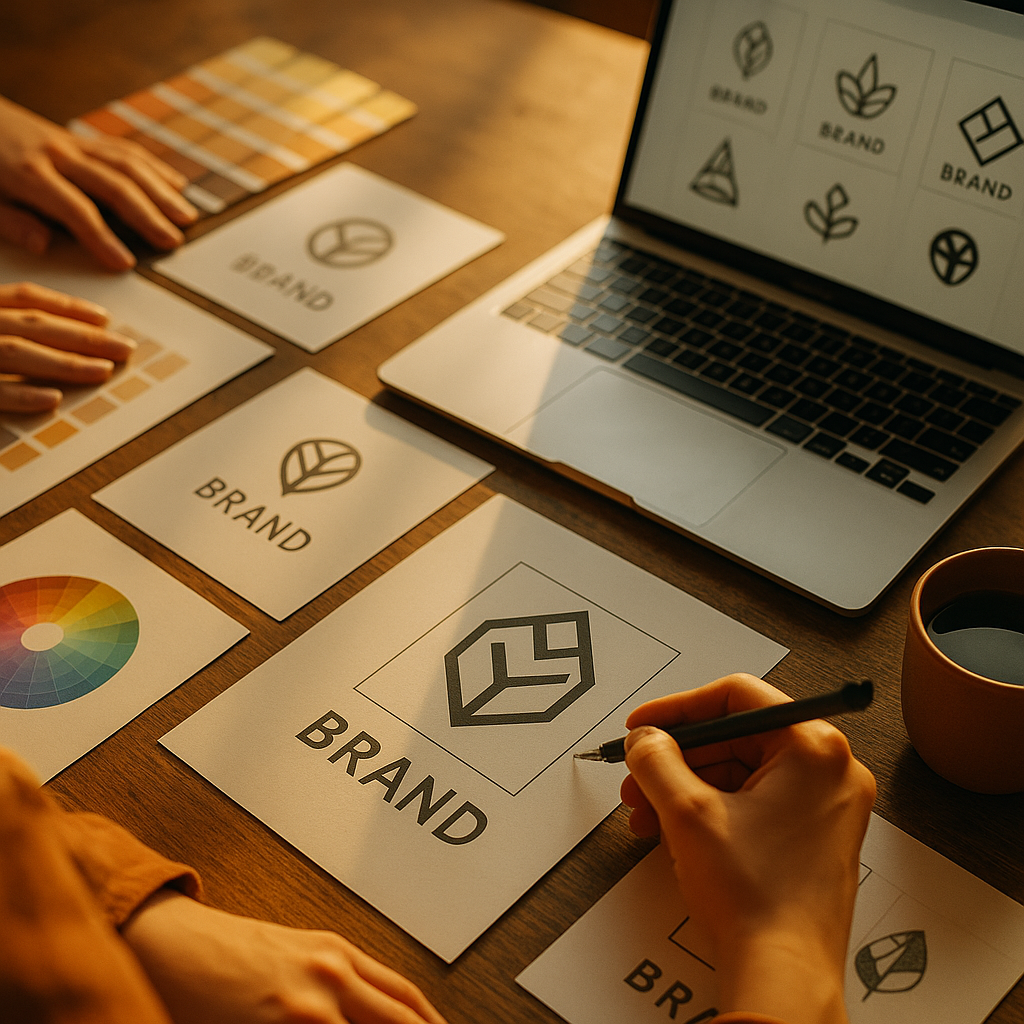Creating a brand identity that is both beautiful and functional is essential for standing out in today’s competitive market. Cohesive branding not only turns heads but also drives business goals and builds trust. Ready to transform your brand into an asset that attracts, communicates, and converts? Discover the steps to crafting an impactful brand identity, from strategy to execution.
Why Functional and Beautiful Brand Identity Matters
A brand identity is more than just an eye-catching logo. It’s a holistic system that communicates your business values, personality, and promise. In 2025, consumers expect seamless interactions with brands at every touchpoint. According to a 2024 Nielsen report, 59% of consumers claim they choose brands based on perceived authenticity and design coherence.
Balancing aesthetics and functionality is critical. Beautiful design may capture attention but functionality ensures users can navigate, understand, and form lasting connections with your brand—across websites, packaging, social media, and beyond.
Core Elements of an Effective Visual Brand Identity
Your brand identity is forged by several core elements, each contributing to how your business is perceived. Let’s break down the essentials:
- Logo Design: Your primary symbol. It should be memorable and versatile for different sizes and platforms.
- Color Palette: Choose 2-4 primary brand colors and an extended palette for various applications. Ensure accessibility for all users.
- Typography: Select fonts that reflect your brand tone. Consider digital readability and ensure consistency across all materials.
- Imagery and Graphics: Establish a distinctive photographic and illustration style with high quality, original visuals.
- Brand Voice: While visual elements are key, your written communication style ties everything together.
Consistency across these elements boosts brand recall and professionalism. Use templates and style guides to ensure teams maintain the same standard in every output.
Building a Brand Strategy for Lasting Impact
Before diving into aesthetics, grounding your efforts in strategy sets your business up for success. Your brand strategy is the guiding blueprint for all creative decisions.
- Define Your Audience: Use data-driven personas. Identify their needs, preferences, and digital behaviors so that your identity resonates.
- Articulate Your Values: Modern consumers demand transparency. Clarify your mission and ethics—are you eco-friendly, innovative, or community-focused?
- Position in the Market: Analyze your competitors. How can you create brand differentiation?
- Set Measurable Goals: Know what success looks like: increased awareness, conversions, loyalty or social engagement?
Strategic planning enables your creative team to design assets that not only look stunning but also support business objectives and user needs.
Implementing Your Brand Across Multiple Platforms
To ensure your brand identity is truly functional, it must be adaptable for all channels. In 2025, touchpoints include websites, mobile apps, print, packaging, videos, and social media. Here’s how to maintain a coherent brand experience:
- Web and Digital: Use responsive, accessible design. Visuals and messaging must work seamlessly on all devices for maximum reach.
- Social Media: Standardize avatar images, cover photos, and post templates. Leverage Stories and Reels for dynamic brand content.
- Print and Packaging: Ensure color consistency with Pantone or CMYK codes. Choose materials that align with your brand values (e.g., sustainability).
- Employee Advocacy: Empower employees with brand resources. Consistent internal communication strengthens external messaging.
Uniformity helps you foster recognition and trust, while adaptability ensures your brand excels on both traditional and digital platforms.
Balancing Creativity With Usability Standards
Stunning visuals alone won’t guarantee success unless your brand assets are usable. In today’s digital-first landscape, usability should underpin every design decision.
- Accessibility: Ensure content meets WCAG guidelines—adequate color contrast, readable fonts, and screen-reader friendly layouts.
- Scalability: Your logo and graphics must work at all sizes, from favicon to billboard.
- Testing: Conduct usability testing with real users. Gather feedback and iterate on pain points.
- Performance: Keep file sizes optimized for fast loading, especially for media-rich websites and eCommerce platforms.
A functional brand identity is universally usable, breaking down barriers for every customer.
Measuring Success and Evolving Your Brand
You’ve launched your new brand identity—but the work doesn’t end there. Evaluate the impact and adapt as your business grows and the landscape shifts.
- Track Key Metrics: Use brand tracking tools to monitor awareness, sentiment, engagement, and loyalty.
- Collect Feedback: Encourage honest feedback from customers and employees. Social listening tools are invaluable.
- Iterate and Refresh: Even the world’s best brands evolve. Review your identity annually to stay ahead in design trends and user expectations.
Continuous improvement ensures your brand remains relevant, beautiful, and functional no matter how the market changes.
Conclusion: The Power of a Well-Crafted Brand Identity
A brand identity that is both beautiful and functional drives recognition, trust, and loyalty in 2025’s dynamic business world. By combining strategy, creativity, and practical usability, you create a system that delights customers and accelerates business growth. Invest in both form and function—your brand’s impact, reach, and resilience depend on it.
FAQs About Creating a Brand Identity That Is Both Beautiful and Functional
- What is brand identity?
A brand identity is the collection of visual, verbal, and emotional elements that distinguish a business. It includes the logo, color palette, typography, imagery, and brand voice. - Why should brand identity be both beautiful and functional?
Beautiful design attracts attention and communicates your values, while functional design ensures users have a seamless, accessible experience—leading to stronger connections and loyalty. - How often should I update my brand identity?
Review your brand identity yearly to ensure relevance and consistency. If business goals or audience expectations shift significantly, consider a refresh sooner. - How do I test if my brand identity is functional?
Regularly gather user feedback, monitor key brand metrics, and perform usability testing across platforms. Pay attention to accessibility and scalability. - Can small businesses afford professional brand identity design?
Yes. Many freelance designers and agencies offer scalable packages. Investing in a clear, unified identity pays long-term dividends in trust and growth.
